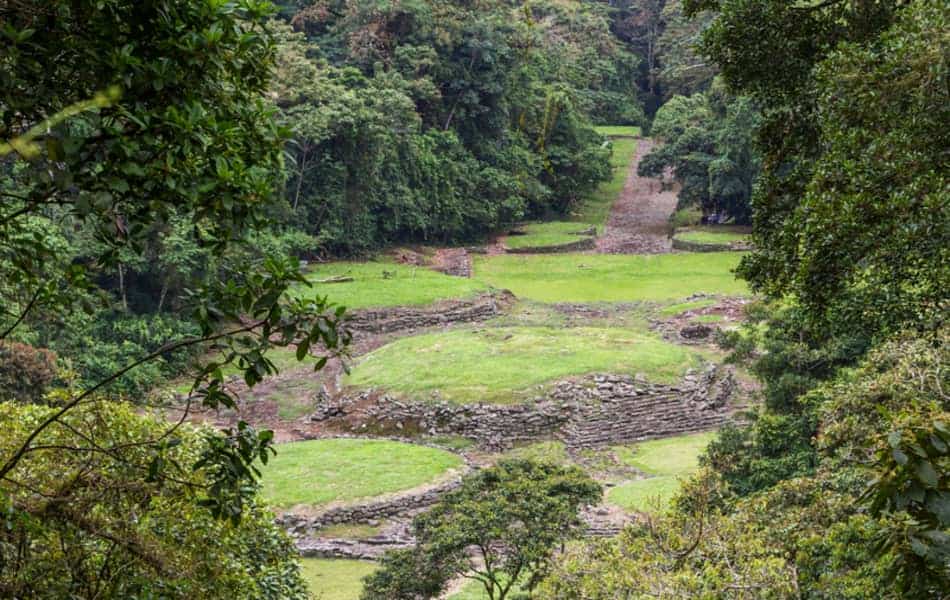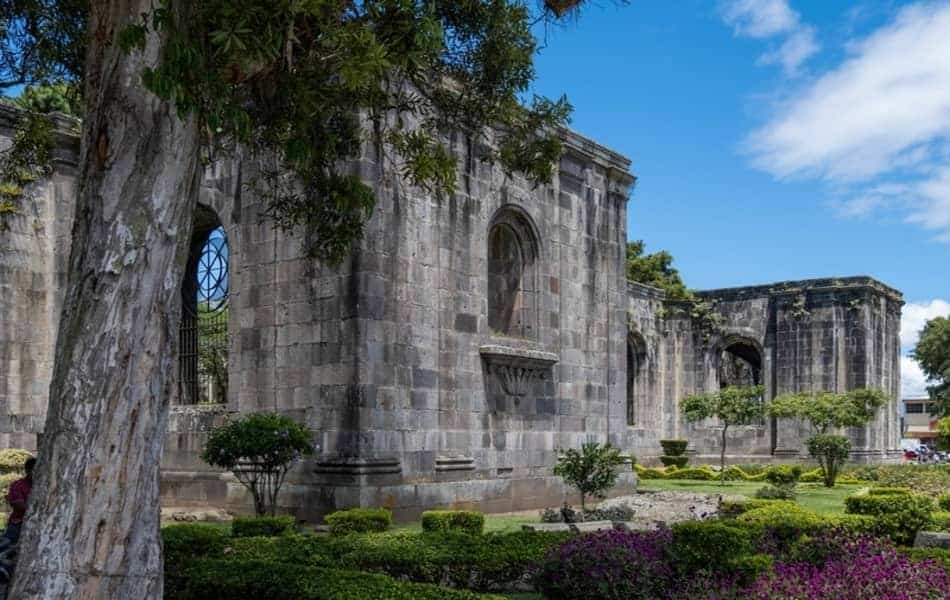
Costa Rica is a country filled with natural beauty, sunshine, and a proud history too. You can see remnants of this history that has been left behind in some of South America’s beautiful countries – and Costa Rica is one of them.
Table of Contents
It appears as if the Incas left their mark in Costa Rica by some amazing ruins left behind
Did you know that the Incas were part of South America’s most powerful and largest ancient empire? The Incas already rose to great prominence way back in the 12th century remaining in power for over 4 centuries.
One of the most astonishing aspects about the Incas is that they managed to become one of the world’s most powerful ancient empires without using cast iron, the wheel, and no forms of writing either.
Ultimately they proved to be defenseless against the Spanish conquistadores. Eventually, the last remnants of the majestic Inca Empire were extinguished in the 1500s.
Even though Costa Rica has been inhabited by the Incas since around 5000 B.C., still Costa Rica’s history has been mainly influenced by Spain. It was Christopher Columbus who “discovered” and named Costa Rica in 1502. It means “rich coast”.
It was the Spanish government as well as the Catholic Church that played a massive role in the cultural development of Costa Rica. But still, there are still the influences of the Incas and Aztecs that are still strong in Costa Rican customs and folklore.
Some fantastic Inca ruin sites you won’t be able to resist viewing

Guayabo National Monument
- This site is considered by the Ticos to be Costa Rica’s most ancient site.
- It consists of 540 acres of ancient stonework and beautiful and carefully built mounds.
- Experts believe this area was occupied between 1000 B.C. and 1400 A.D. The mounds would demonstrate hierarchy in society. So the higher ranked you were, your house would be perched on some of the largest mounds.
- Some roads have even been discovered on this site, showing how advanced this ancient society was.
- And lying in the shadows of the Turrialba Volcano – like out of a mythical lost city, lies a very mysterious ancient city, claimed to be home to over 10,000 people who seemed to have vanished just before the Spanish arrived in the 16th century. It’s a mysterious eerie region, this area, where the Guayabo National Monument lies – an amazing and important archaeological site, filled with mystery and intrigue.
- Even though not much is known about the inhabitants of this region, archaeologists still are discovering what the name of this city was as well as its inhabitants. If you visit it yourself, your imagination can run wild and you can well think up all your own beliefs and explanations about this amazing site.
- Who were these early residents of Costa Rica? Evidence suggests they were a people of great religious and political importance, but details are still to be uncovered – it could well have been the Incas.
- Enhancing all the secrecy around Guayabo’s, you will discover abstract, ancient carvings which actually today, still continue to baffle the modern-day archaeologists. They are discovering that there is still much to learn and discover about this deeply mysterious site. This site is the largest and also the most important archaeological site in Costa Rica. 49-acres consist of an intricate system of aqueducts, buildings, roads, bridges, walls, and out of the ordinary artistry.
- All these remains suggest that this site was home to some very advanced people and society, of high political, social, and economic standing. All the artifacts reveal that the residents here were very highly skilled in engineering, civil, and urban design.
- There are tombs too, known as the “Tumbas de Cajon,” which have also been uncovered on site.
- Visiting here, you go back in time, walking the ancient streets. It is an archeological site and still today, little is known about the ancient civilization that lived at Guayabo.
Santiago Apostol Parish Ruins

- These magnificent ruins are situated in Cartago City in Costa Rica. Today it is a Heritage Site; in fact, a few churches have existed on this site through the years. A presidential decree declared it a “historical relic”.
- Legend has it that there were two brothers who lived in Cartago City, one was a wonderful loved guy and the other was a priest. However, a rivalry developed between them because they both fell in love with the same girl. In the end, the girl married the lazy brother, the brother of the priest. The priest was devastated and furious, doing everything in his power to destroy his brother. Whilst the New Year mass was on in 1577, the priest noticed his brother in the church, going up to him and killing him with a knife. He knew he had sinned and as penance for his wrongdoing, he built a church. However a year later this church was destroyed in an earthquake. Every time it got rebuilt, another earthquake would destroy it, until finally in 1910, it was deemed a cursed site. Some say that on a foggy night, the priest can be seen inside the ruins, headless, wandering around and paying the price for desecrating a holy site.
- Many people know the ruins by the official name, Santiago Apostol Parish Ruins. But lots of the locals just speak about The Ruin. If you battle finding it, remember to mention The Ruin, because some of the locals know it only by that name.
The Stone Spheres
- The stone spheres are considered the world’s greatest archaeological mysteries, and they are so perfectly formed! They date back over a thousand years. There is nothing to explain what their purpose is either.
- These spheres were discovered in the Diquis River Delta in the southern Caribbean and there have been more discovered since.
- Archaeologists regard these as very important sculptures of the Isthmo-Colombian era.
- They are carved from granite so you can imagine how heavy they are. They measure between three inches and eight feet in diameter. Can you believe that the largest ones weigh more than 10 tons or 20,000 pounds!
- It is astonishing to see how the stone carvers of those times were so precise, working only with their basic tools and hands! Today only six remain at their original sites.
- The stone spheres are truly a modern-day mystery of who created them and for what purpose? Naturally, a few theories have been suggested, but experts agree about one thing and that they were made by a highly advanced society – it’s amazing to think about! You will find these stone spheres around the Costa Rican country, mostly at the San Jose’s National Museum and Legislative Assembly.
Las Mercedes Archaeological site
This interesting location is in La Guacima. It has 62 acres of ancient city systems that date back to 1,500 BC. Archaeologists believe that Las Mercedes once was a social and political center, similar to Guayabo, as mentioned above. Excavations still continue to find out more about Las Mercedes.
Ujarras Ruins
The Ujarras Ruins are simply beautiful – grey and white stone walls standing like ancient skeletons against a backdrop of verdant green hills. These remains are that of an ancient church built already in the 16th century – it is said that its demise was as a result of the earthquakes in Costa Rica, and some of them were pretty violent.
Don’t forget to go and look at these ancient ruins, whether they are derived from the Incas or not, they are worth a look.
Rivas
Right in the center of the country, you’ll find Rivas. It is a former residential complex and comprises round structures made from large river cobbles. It has rectangular patios outside.
Look at the interesting ceramic musical instruments and beads and whistles – some of these have been designed and created in the shape of human heads!
Costa Rica was considering a meeting place for Mayas, Azteca’s and Incas from South America
It is known that the ruins of Guayabo in Turrialba were once the meeting places for the above great groups. In fact, it is said that many ways to prove that these people were in Costa Rica can be found at the National Museum.
There is a very big Indian head made from stone, but if you look at the right side of the cheek, you will notice it is bigger or more puffed out – he would have been chewing on coca, which was very common among the Incas.
Enjoying looking at these incredible archaeological sites of highly intriguing peoples with an incredible history; let your imagination run wild – it’s the ancient wisdom from the ancient ones.
